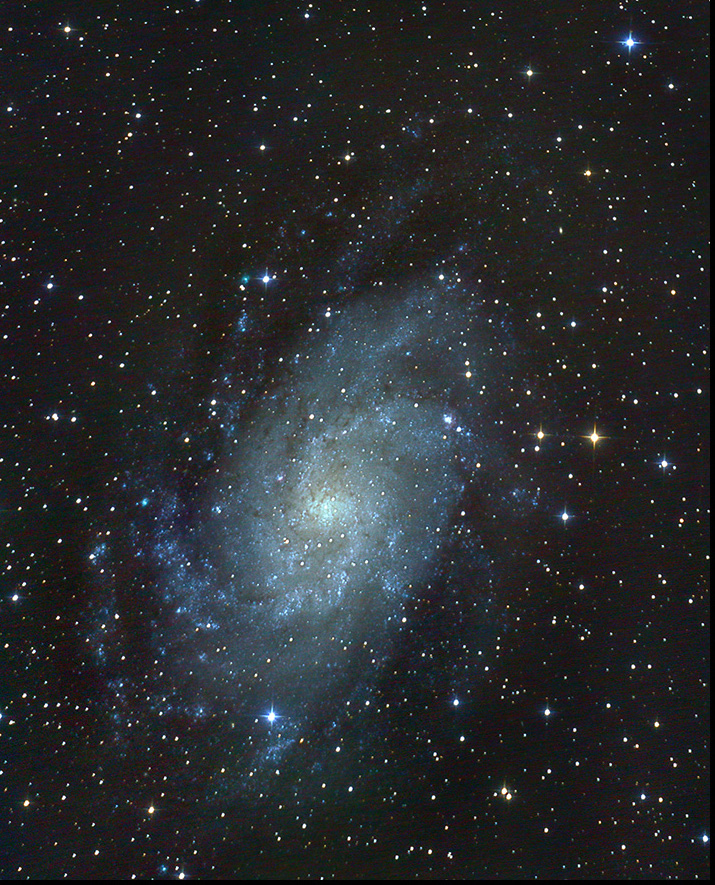11/18/2014. Nightwork in progress! Here's a supernova remnant in Cygnus. This is 45, three-minute exposures. After this, I tried to shoot one of the brightest galaxies in the sky --and missed -- and then I left the telescope collecting light from another SN remnant in Gemini. All in all, I'm not sure the difference between an image comprised of 10 exposures is all that inferior to this one made up of 45. The difference is easily measured, but is it easily seen? More about that sooner or later. Also more of the night's take if it comes together reasonably well. (I enjoyed 8 hours and 48 minutes of useful, open-shutter time tonight; that might be a personal best.)

NGC 6992
10-inch F4 Newtonian with Baader MPCC-III on
Mach1GTO
Canon 6D, 45x180s @ ISO 1600 (25°F) 2h15m total
8, 180s darks, 8 flats and 8 bias frames
50mm guide-scope and ST-V
(Click the image for a better presentation)
I shot M33 next, but after carefully centering the galaxy, I slewed away to shoot fresh darks while M33 climbed clear of an overhanging pine bough. I thought I'd recalibrated on the galaxy before leaving the field, but evidently did not. I damn near missed the galaxy when I slewed back and started taking subs. Could've checked my aim in 15 seconds, but didn't. Salvage to come. I finished the night on IC 443, a huge, much-imaged supernova remnant near Eta Geminorum. In the interests of seeing just what the 6D can do with an H-a dominated target, I give you 3 hours and 48 minutes (all the Canon's battery would allow on a 20°F night) of staring into space:

IC 443, cropped
76x180s, all else as above
That collection of data required 4h05m to calibrate, align and stack using master-bias, -dark, and -flat frames. In fairness, I was fiddling on the computer while it processed the pile. 180s exposures are indeed the point at which EOS-6D data acquisition and PixInsight processing take about the same amount of time on this decent but unspectacular i3-based Dell Inspiron (2.4Ghz, 8GB RAM, 256 GB SSD). The photo of IC 443 has nowhere near the contrast and details a similar exposure with the SBIG CCD show (e.g.: here and here among others on dusty old slowblog pages). On the other hand, only the wide field of the DSLR behind the 10-inch reflector revealed that wierd little cosmic bauble in the upper left. Guide 9.0 identifies it as "DG 99" at the terminus of LDN 1562 (not particularly visible in this photo).
And finally, the salvaged M33, which worked much than I expected it to after seeing the low-contrast, mis-aimed subframes. The galaxy was drastically off-center on the chip, but after cropping severely with a good flat, etc., a promising image survives my midnight foibles:

M33
55x180s (2h45m)
(New and improved version on the next page. Just sayin'.)
There are a number of extended spiral arms out in the dim. I'd suspected as much and that they might be within reach with enough aperture, a wide enough field of view, and a sensitive enough camera; I just didn't think tonight's data would reveal them. It's a harsh rendition, though, of an almost ineffably soft subject. It deserves better.
Next time, center the galaxy, expose longer (of course), and if you can find a darker sky, use it.